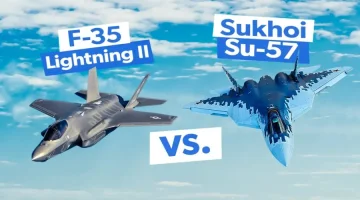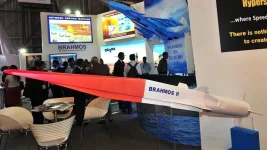- Views: 3K
- Replies: 13
India and Russia are poised to advance their strategic partnership by potentially giving the final approval to the long-delayed BrahMos-II hypersonic missile program.
According to official sources, the decision is expected to be finalised during Russian President Vladimir Putin’s visit to India later this year, marking a major step in the joint development of this next-generation weapon.
The new missile, known as the BrahMos-II or BrahMos Mark II, is planned as the hypersonic successor to the widely deployed supersonic BrahMos missile.
This advanced weapon system is expected to be technically based on Russia’s formidable 3M22 Zircon missile, which is powered by a scramjet engine and capable of carrying a nuclear warhead.
A Leap in Strategic Deterrence
The BrahMos-II project represents a significant enhancement of India's strategic defence capabilities in an increasingly complex regional security landscape.The program is managed by BrahMos Aerospace, an established joint venture between India’s Defence Research and Development Organisation (DRDO) and Russia’s NPO Mashinostroyeniya.
First proposed nearly a decade ago, the missile is being designed to travel at hypersonic speeds between Mach 7 and Mach 8 (seven to eight times the speed of sound) and strike targets up to 1,500 kilometres away.
This capability would provide India with a powerful tool for precision strikes against high-value land and sea targets from a significant distance, making it extremely difficult for adversaries to intercept.
Overcoming Technical and Financial Hurdles
The development of BrahMos-II has faced considerable delays over the years. Initial progress was slowed by Russia's hesitation to share its highly sensitive scramjet engine technology, a key component for sustained hypersonic flight.Further, there were concerns within the Indian Armed Forces regarding the missile's high projected cost, which was estimated to be nearly double that of the current BrahMos missile.
However, recent geopolitical shifts and India's own technological advancements have provided new momentum.
India's induction into the Missile Technology Control Regime (MTCR) in 2016 removed some of the regulatory barriers for Russia to share advanced technology.
Furthermore, international sanctions placed on Russia have encouraged Moscow to deepen its technological collaboration with trusted partners like India.
Building on a Proven Legacy with Indigenous Innovation
The BrahMos-II aims to build upon the remarkable success of its predecessor. The original BrahMos, known as the world's fastest supersonic cruise missile, travels at Mach 3.5 and has a range between 290 and 800 km.It is a critical asset for the Indian Army, Navy, and Air Force, proven in numerous tests and its reliable performance during military operations.
While the BrahMos-II will draw from the Russian Zircon's design, which can reportedly reach speeds of Mach 9, it will also feature significant Indian contributions.
In a major milestone in April 2025, the DRDO successfully ground-tested an indigenous scramjet engine combustor, demonstrating India's growing expertise.
Former DRDO chief Dr. Sudhir Kumar Mishra noted that this homegrown technology could be integrated into the BrahMos-II, reducing dependency on Russian systems and promoting the "Make in India" initiative.
This approach will create a hybrid system that blends proven Russian technology with Indian innovation.
Phased Development and Strategic Implications
High-level talks between Indian and Russian defence officials, including National Security Advisor Ajit Doval and his Russian counterpart, are expected to finalise the terms of joint production and technology transfer during President Putin's visit.The development is likely to occur in two phases to manage technological complexity and costs.
The first stage aims to produce a near-hypersonic version by 2026, using an advanced ramjet engine to reach speeds just over Mach 5. This will be followed by a true hypersonic variant equipped with a scramjet engine, with a target completion date of 2027.
Once operational, the BrahMos-II will significantly boost the offensive power of all three branches of the Indian military.
The Navy can use it to dominate the Indian Ocean, the Air Force can deploy air-launched versions from its Su-30MKI fleet, and the Army can use it to target strategic assets deep within enemy lines.
Due to its advanced capabilities, and in compliance with MTCR regulations, the BrahMos-II will be an exclusive strategic weapon for Indian and Russian forces and will not be available for export.



